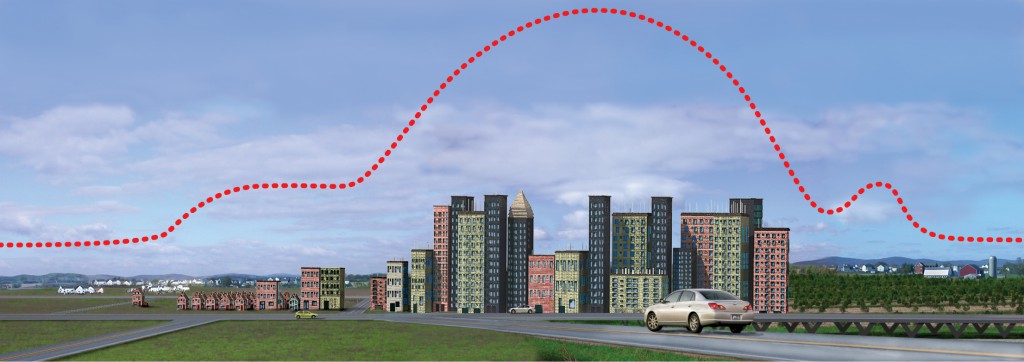Extreme heat threat rises for world’s megacities
By Tim Radford
LONDON, 3 April 2017 – The area of the world, and the numbers of city dwellers, exposed to serious risk from extreme heat will multiply later this century even if the world’s nations keep their promise and contain global warming to 2°C or less, according to new research.
If global warming is contained at 1.5°C – the ideal target identified at the 2015 climate summit in Paris − the researchers say the number of megacities, with populations over 10 million, in the danger zone will double from today’s figure, and the numbers of people exposed to potentially lethal heat stroke and heat exhaustion could reach 350 million by 2050.
The problem, explored in a study published in the Proceedings of the National Academy of Sciences is not just the average planetary increment of heat: it is that averages conceal extremes, and the number of episodes of extreme heat is expected to climb dramatically even with a modest-sounding increase in a global average.
Humidity hazard
And with heat comes the extra hazard of humidity. With each 1°C rise in temperatures, the atmosphere’s capacity for moisture rises by 7%.
The scientists looked at data for 44 megacities − including Karachi in Pakistan, Kolkata in India − that in 2015 experienced their highest temperatures in more than 30 years.
“If relative humidity stays constant – and that’s what we expect with climate change – and temperatures go up, that means the amount of moisture in the atmosphere is increasing non-linearly,” says Tom Matthews, a climatologist at Liverpool John Moores University in the UK, who led the research.
He told Climate News Network: “That really affects how easily we cool off, because we lose heat by sweating − and the more moisture in the atmosphere, the less efficient that process becomes.”
Other scientists had already established that if global temperatures rise by 4°C this century − in the notorious business-as-usual scenario in which humans go on burning fossil fuels and depositing ever more carbon dioxide in the atmosphere − then some parts of the globe could become intolerably hot for at least part of the day, and potentially uninhabitable.
“These results already look quite serious.
There is a strong incentive to stick
to that lower temperature target”
Extreme heat has already been identified as a potential killer for some communities, and uncontrolled greenhouse gas emissions could spur ever more waves of migrants from the Middle East and North Africa, driven from their homes by extremes of heat and drought.
That is what could happen in extreme conditions, but Dr Matthews and his colleagues wanted to know what would happen with even a modest rise in average global temperatures.
“Heat stress starts at a much lower temperature, because we are moving around, we are generating heat internally, and we need to dissipate that heat,” he says.
The scientists started with the standard limit at which meteorologists warn of dangerous conditions, when the thermometer tips 40.6°C, and then began to look at what could happen when the world reached the 1.5°C average rise threshold.
“It might not sound like much, but considering we have had 0.8°C already, and we are committed to 0.7°C going forward, that’s a very big change,” Dr Matthews points out..
The levels of moisture in the atmosphere increase steeply with temperature. Then, he says, factor in the average number of days across the Earth that will experience temperatures above 40.6°C.
Those places that already experience those conditions will experience them more frequently, and the areas that experience this extreme heat will expand. The numbers of people crowded in tropical megacities, often in appalling conditions, will also increase with time.
Extreme heat frequency
“One example we give is Lagos in Nigeria,” Dr Matthews says. “With 1.5°C of warming you get this temperature of 40.6°C a hundred times more frequently, because it sits quite close to the threshold anyway.
“We don’t know when that 1.5° C of warming may occur by, but if it occurred at the end of the century we would expect the heat stress in terms of the number of days above this threshold to be a hundred times more common.
“At the same time, according to population projections, the population of Lagos would be 11 times larger than it was in 1995.”
That combination of frequency of extreme heat and swelling numbers in the urban heat traps means, he says, that the risk could be multiplied a thousandfold − and that’s just a temperature rise contained at 1.5°C. A rise of 2°C would have even more dramatic consequences.
“These results already look quite serious,” Dr Matthews warns. “There is a strong incentive to stick to that lower temperature target.” – Climate News Network




